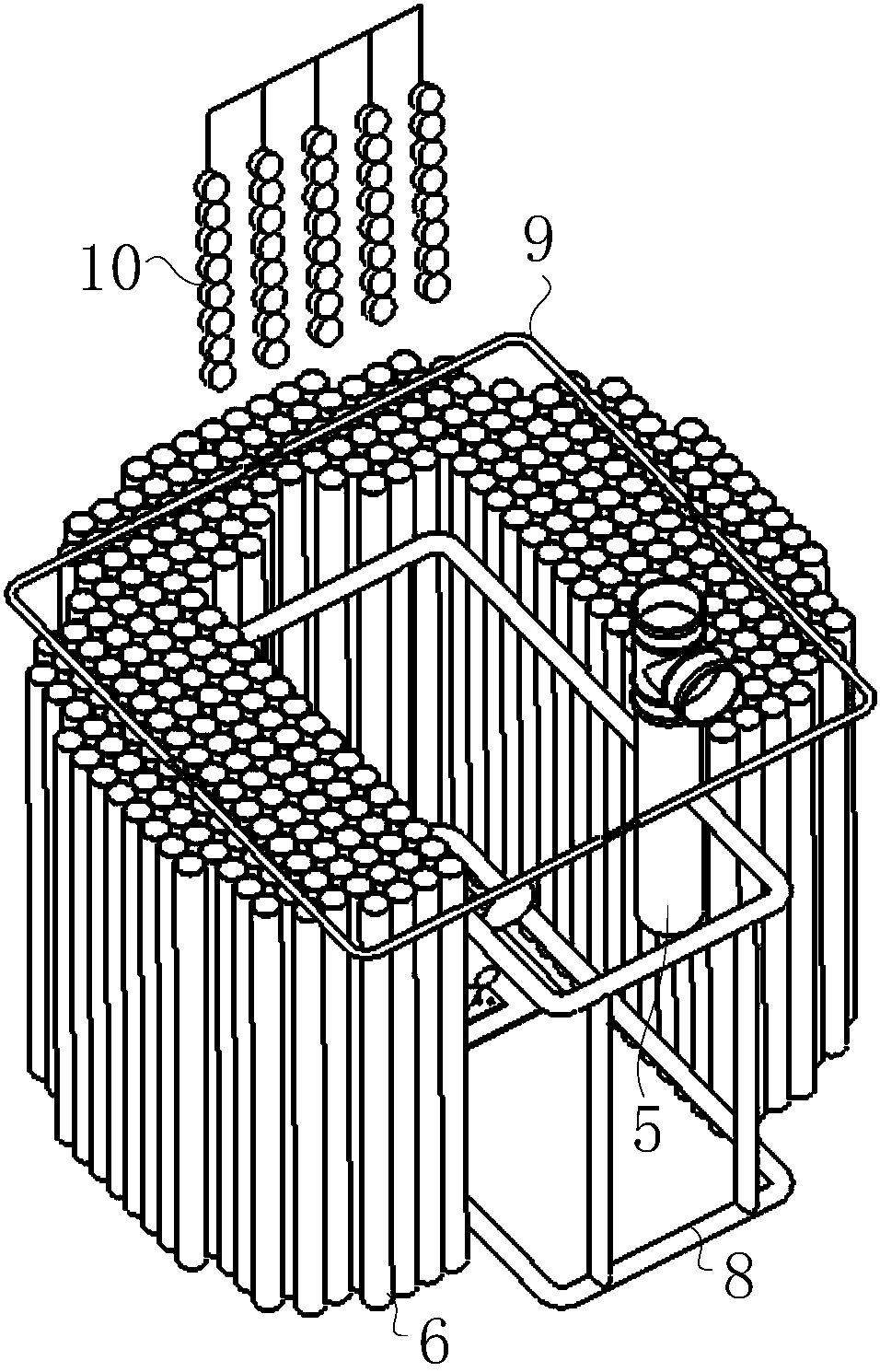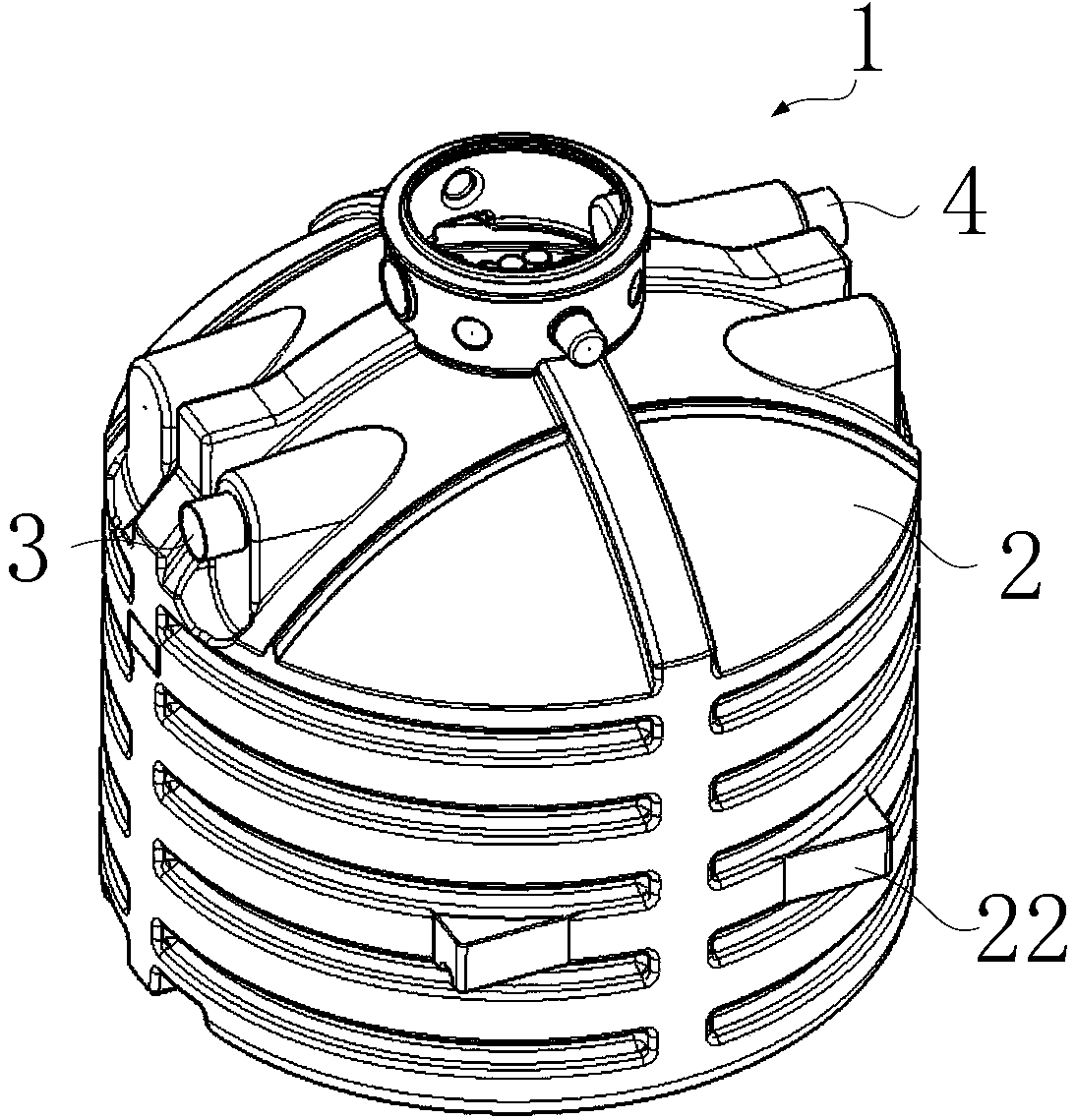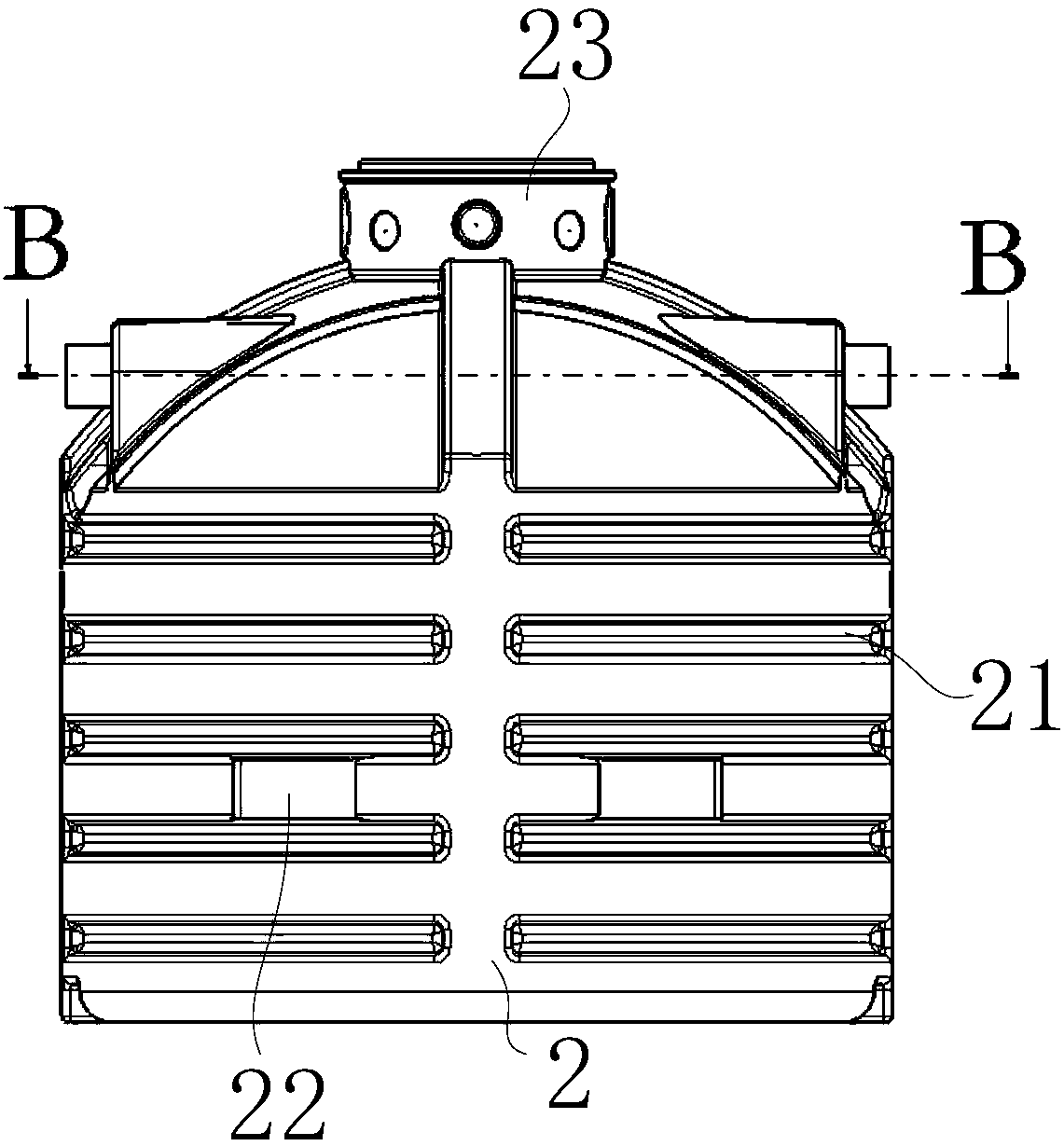Slow-release coprecipitated phosphate-removing module and buried phosphate-removing cabin
A co-precipitation and buried technology, applied in the direction of water pollutants, water/sludge/sewage treatment, biological water/sewage treatment, etc., can solve the problems of high construction costs, complex sewage components, and unpredictable release volume and release time. It can save manpower maintenance cost, excellent slow-release effect and excellent treatment effect.
- Summary
- Abstract
- Description
- Claims
- Application Information
AI Technical Summary
Problems solved by technology
Method used
Image
Examples
Embodiment Construction
[0030] Below, the present invention will be further described in conjunction with the accompanying drawings and specific implementation methods. It should be noted that, under the premise of not conflicting, the various embodiments described below or the technical features can be combined arbitrarily to form new embodiments. .
[0031] Slow-release co-precipitation phosphorus removal module, such as figure 1 As shown, it includes several vertically closely arranged fixed-bed biofilm tubes 6 and slow-release tablets 10; several slow-release tablets 10 are placed on the side of the fixed-bed biofilm tube 6 in a string; the fixed-bed biofilm tube 6 is a hollow tubular structure ; The wall of the fixed bed biofilm tube 6 is provided with a number of micropores 6; micro-electrolysis fillers are placed in the fixed-bed biofilm tube; the fixed-bed biofilm tubes adjacent to each other and placed with micro-electrolysis fillers form slow-release channels; The metal ions are released s...
PUM
| Property | Measurement | Unit |
|---|---|---|
| diameter | aaaaa | aaaaa |
| thickness | aaaaa | aaaaa |
| diameter | aaaaa | aaaaa |
Abstract
Description
Claims
Application Information
 Login to View More
Login to View More - R&D
- Intellectual Property
- Life Sciences
- Materials
- Tech Scout
- Unparalleled Data Quality
- Higher Quality Content
- 60% Fewer Hallucinations
Browse by: Latest US Patents, China's latest patents, Technical Efficacy Thesaurus, Application Domain, Technology Topic, Popular Technical Reports.
© 2025 PatSnap. All rights reserved.Legal|Privacy policy|Modern Slavery Act Transparency Statement|Sitemap|About US| Contact US: help@patsnap.com



